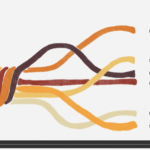
ROMIT RAJ
Quicksand Design Studio
BABITHA GEORGE
Quicksand Design Studio
CRISTIN MARONA
Matchboxology
REBECCA WEST
Ipsos
ANABEL GOMEZ
Independent Technical Advisor
TRACY PILAR JOHNSON
The Bill & Melinda Gates Foundation
ADITYA PRAKASH
Quicksand Design Studio
SUNNY SHARMA
Ipsos
AYUSHI BIYANI
Quicksand Design Studio
MRITTIKA BARUA
James P Grant School of Public health, BRAC University
CAL BRUNS
Matchboxology
[s2If is_user_logged_in()]DOWNLOAD PDF
[/s2If]
[s2If current_user_can(access_s2member_level1)]
[/s2If]
Globally, the COVID-19 pandemic has been an inflection point, bringing heightened awareness around the preparedness and resilience of public health systems in dealing with severe shocks. While the pandemic has accentuated the existing weakness in public health systems, for many, especially those belonging to marginalized sections of society, seeking healthcare has always been fraught with severe challenges and frictions.
This paper presents the findings from a two-year design research project conducted...





